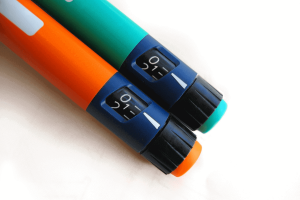To graze or not to graze?
Just like music, websites, and the latest fashion trends, diets constantly go in and out of style. One minute, gluten-free is the way to be, and the next we hear oatmeal and whole grains are the superfoods that our bodies crave. One eating plan that has managed to stick through the pop culture cycle is the “grazing” diet, or the idea that eating 4-6, mini meals throughout the day is the best way to fill up, slim down, and now manage your blood sugar. But before you reach for that snack, read on about the benefits and drawbacks this diet can have when it comes to your diabetes eating plan.
PROS
- Feel fuller, longer. Eating more frequently gives your body a steady supply of glucose, meaning you’ll feel fuller and better fueled for a longer period of time. According to the USDA, people who eat several nutrient-dense snacks made up of fresh produce, lean protein, and whole grains are less likely to overeat or reach for unhealthy “junk” food in a moment of low blood sugar.
- Boost your metabolism. Our metabolism increases slightly each time we eat so that our bodies can digest the food. Some physicians think frequent snacking is an excellent way to keep a person’s metabolism working in high-gear throughout the day.
- Grazing won’t help you lose weight. Recent studies have shown that grazing isn’t the best diet for those who are looking to drop a few pounds. Instead, it’s all about the calories. A study by the U.K. National Institute for Health Research showed that weight loss is affected by what and how much people eat as opposed to when they eat it.
- Grazing may lead to poor heart health. Some studies have shown a correlation between eating frequently and a rise in cholesterol and blood pressure. A few researchers argue that humans weren’t meant to graze; instead, our bodies were designed to digest fewer, larger meals that are spaced further apart throughout the day.
- You can lose track of calories. Between a nibble of cheese here and a few crackers there, it’s easy to forget just how many calories, sugars, and carbs you’ve consumed throughout the day. This makes it difficult to stay on top of tracking your sugars and sticking to a healthy diabetes eating plan.




